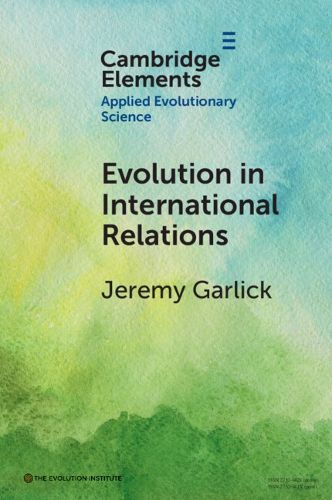Readings Newsletter
Become a Readings Member to make your shopping experience even easier.
Sign in or sign up for free!
You’re not far away from qualifying for FREE standard shipping within Australia
You’ve qualified for FREE standard shipping within Australia
The cart is loading…






Scholars of international relations (IR) and evolution pay little attention to each other's fields. However, there is a need to examine evolution's impacts in IR. International actors such as nations are made up of people, so evolved human nature has an impact on relations within and between states. Accordingly, this pathbreaking Element will attempt to apply insights from evolutionary biology, evolutionary psychology, neuroscience, and archaeogenetics to IR. Among such insights are the evolved role of emotions in decision-making, intergroup competition as a driver of in-group cooperation, and culture, morality, and language as group-binding mechanisms. Homo sapiens is a primate, so comparison with the behaviours of other great apes reveals some commonalities in terms of group dynamics, status, and hierarchies, as well as the enduring human capacity for both in-group cooperation and organised violence against other groups. These have an evolutionary basis that is relevant to IR theory and practice.
$9.00 standard shipping within Australia
FREE standard shipping within Australia for orders over $100.00
Express & International shipping calculated at checkout
Scholars of international relations (IR) and evolution pay little attention to each other's fields. However, there is a need to examine evolution's impacts in IR. International actors such as nations are made up of people, so evolved human nature has an impact on relations within and between states. Accordingly, this pathbreaking Element will attempt to apply insights from evolutionary biology, evolutionary psychology, neuroscience, and archaeogenetics to IR. Among such insights are the evolved role of emotions in decision-making, intergroup competition as a driver of in-group cooperation, and culture, morality, and language as group-binding mechanisms. Homo sapiens is a primate, so comparison with the behaviours of other great apes reveals some commonalities in terms of group dynamics, status, and hierarchies, as well as the enduring human capacity for both in-group cooperation and organised violence against other groups. These have an evolutionary basis that is relevant to IR theory and practice.